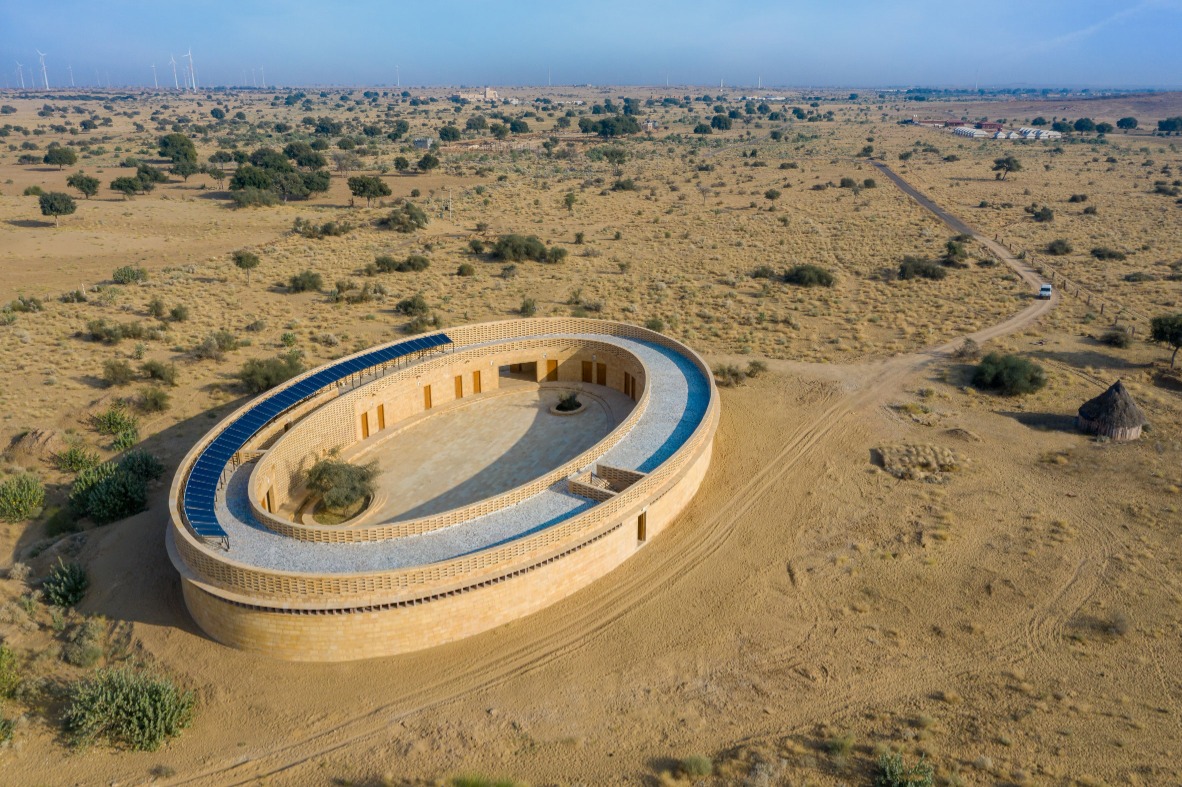There are no items in your cart
Add More
Add More
| Item Details | Price | ||
|---|---|---|---|
Tue Jun 28, 2022
A sustEnable marvel…A structure in the middle of the Thar Desert in Rajasthan, India At the first look it might seem like an alien spaceship, but a closer look unveils a brick and mortar structure. Perched on top of the mystic Thar Desert, the Rajkumari Ratnavati Girl's School is an astounding sandstone structure that seamlessly merges into the surrounding parched terrain. A more detailed examination would unfold the strong foundation of sustainability on which this school is built where the students can study and even play in the protected courtyard without worrying about the extreme weather. The school named after the princess of Jaisalmer, ‘Ratnavati’ is known as the Rajkumari Ratnavati Girls School. This was conceptualised by CITTA (a USA based non-profit organization working in India and Nepal towards empowering women in impoverished regions, in the fields of health, education and economy) founder Michael Daube, and designed by US-based architect Diana Kellogg.
At the first look it might seem like an alien spaceship, but a closer look unveils a brick and mortar structure. Perched on top of the mystic Thar Desert, the Rajkumari Ratnavati Girl's School is an astounding sandstone structure that seamlessly merges into the surrounding parched terrain. A more detailed examination would unfold the strong foundation of sustainability on which this school is built where the students can study and even play in the protected courtyard without worrying about the extreme weather. The school named after the princess of Jaisalmer, ‘Ratnavati’ is known as the Rajkumari Ratnavati Girls School. This was conceptualised by CITTA (a USA based non-profit organization working in India and Nepal towards empowering women in impoverished regions, in the fields of health, education and economy) founder Michael Daube, and designed by US-based architect Diana Kellogg.

Standing amidst golden dunes, this architectural wonder in Kanoi village, is just a short drive away from the famous Sam Dunes, at Jaisalmer. Hailing from New York, comprehending a project in the middle of the desert was the biggest challenge for Diana. However taking inspiration from the local architecture, and taking elements of sustainability from the surroundings she moved ahead despite several difficulties. Following ancient architectural methods the surroundings and local resources were used to bring in the element of sustainability in the structure. The building is made from local yellow sandstone, handcrafted by local artisans which helped to reduce the carbon footprint from transportation and logistics.
Jaisalmer’s Maharaja Chaitanya Raj Singh said the school’s oval shaped which projects infinity symbolises womanhood across many cultures and merges with the natural dunes of the landscape. The elliptical structure reduces the distance between the various sections in the building and allows a huge courtyard familiar to Indian culture. This courtyard is used for rain water harvesting and recycling of rainwater throughout the school. The design of the building ensures no air-conditioner is required even though the temperatures cross 50*C during daytime. Multiple factors including plastering the inner walls with lime, use of natural ventilation in the design, and shade from the solar panels itself have helped in this aspect. The canopy and the perforated inner walls filter the sand and keep out the sun and heat. A cooling system which uses geothermal energy brings down the temperature remarkably.

The pattern of airflow inside the building naturally cools it down. The solar panels on top of the building use the natural blaring sunlight to power up the building. The local craftsman worked magic with their stonework carving out the right sizes of sinks for the washrooms too which would not have been possible to custom make, given that this project was built with NGO Funds.
 The school portion, known as the Gyaan Centre, accommodates 400 children between kindergarten to class X. The beautiful structure that has been designed to represent womanhood besides being an education centre, also attracts tourists and serves as a global platform for hosting global events and programmes for women empowerment. This stunning sustainable architectural marvel is a beautiful example of how by using natural eco-friendly resources and age old traditional architecture even the most treacherous climatic conditions and unforgiving landscape can be braved by its inmates.
The school portion, known as the Gyaan Centre, accommodates 400 children between kindergarten to class X. The beautiful structure that has been designed to represent womanhood besides being an education centre, also attracts tourists and serves as a global platform for hosting global events and programmes for women empowerment. This stunning sustainable architectural marvel is a beautiful example of how by using natural eco-friendly resources and age old traditional architecture even the most treacherous climatic conditions and unforgiving landscape can be braved by its inmates.
Choosing Green structures is the need of the hour. They help to reduce carbon footprint, along with uses of resources like water, energy and results in minimal waste and of course cost effective. Using Local and natural materials, designing a Courtyard in the middle of the house, incorporating perforated jalis, arches, window shades and so on go a long way in incorporating natural elements in our lives. Our choice as consumers should be in tune with nature and not against it.
The SustEnable International Students’ Conference scheduled between 4th November 2022 to 7th November 2022 is being organised in Ahmedabad, Gujarat, India to raise awareness about how consumption patterns affect sustainability. This conference would witness students from across the world participate to enable sustainable consumption patterns across multiple industries.
Share on social media
Be a part of the 1st International Sustenable Youth Conference in Ahmedabad, from 4th to 7th November, 2022.
Enroll Now
Manil
English Teacher | Career Mentor | Sustainability Champion